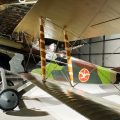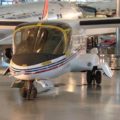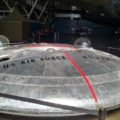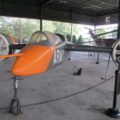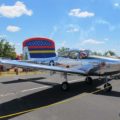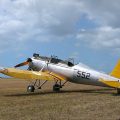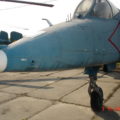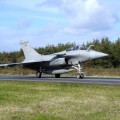
Ryan X-13 Vertijet | |
|---|---|
| Χώρα | Ηπα |
| Ρόλο | Πειραματικό αεριωθούμενο αεροσκάφος VTOL |
| Πρώτη πτήση | December 10, 1955 |
| Χτισμένο | 2 |
Teh Ryan X-13 Vertijet (company designation Model 69) was an experimental vertical take-off and landing (VTOL) jet aircraft flown in the United States in the 1950s. The main objective of the project was to demonstrate the ability of a pure jet to vertically takeoff, hover, transition to horizontal forward flight, and vertically land.
| Ryan X-13 Vertijet με τα πόδια γύρω από | |
|---|---|
| Φωτογράφους | Βλαντιμίρ Γιακούμποφ |
| Εντοπισμού | Εθνικό Μουσείο της USAF |
| Φωτογραφίες | 96 |
Σχετικά κιτ:
| Ryan X-13 Walk Around | |
|---|---|
| Φωτογράφος | Howard Mason |
| Εντοπισμού | Αγνοώ |
| Φωτογραφίες | 38 |
Βρείτε κιτ στο eBay:
Δείτε επίσης:
The Ryan X-13 Vertijet was an experimental jet-powered aircraft that could take off and land vertically. It was built by Ryan Aeronautical Company in the 1950s for the United States Air Force. The main goal of the project was to test the feasibility of a pure jet aircraft that could operate from small platforms or submarines.
The X-13 Vertijet had a delta wing with flat endplates and a single Rolls-Royce Avon turbojet engine that produced 44.6 kN of thrust. The engine had a variable nozzle that could be tilted to provide pitch and yaw control in hover mode. The wingtips had small jets that provided roll control. The nose of the aircraft had a hook and a retractable pole that helped the pilot to align with a vertical trailer bed that served as a landing platform. The trailer could be lowered to horizontal position for ground transportation.
The first prototype of the X-13 Vertijet made its first horizontal flight on December 10, 1955, using temporary landing gear. Later, it performed several transitions from horizontal to vertical flight and vice versa at high altitude. The landing gear was then replaced by a tail-mounted framework that held the aircraft in vertical position on the ground. The second prototype made the first complete cycle of vertical take-off, transition to horizontal flight, transition to vertical flight and vertical landing on April 11, 1957.
The X-13 Vertijet demonstrated the technical feasibility of VTOL jet aircraft, but it had limited practical value due to its low performance, high fuel consumption and complex operation. The project was cancelled in 1957 after two prototypes were built and tested. The two surviving aircraft are on display at the National Museum of the United States Air Force and the San Diego Air and Space Museum.
Θεάσεις : 631


